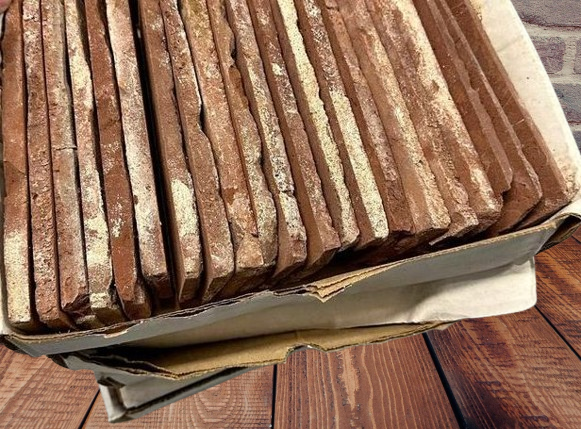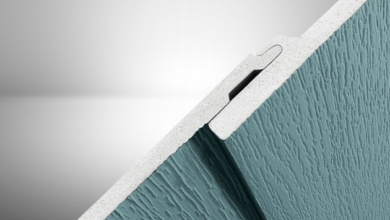Brick Veneer Over Cinder Block

For those who are unaware, brick veneer is a layer of brick that is not structural and is frequently applied as a decorative surface finish.
On a property where the outer layer is made of steel or wood, brick veneers are frequently applied. We are going to attempt to cover the cinder block with brick veneer today.
I’ll go over some strategies for handling this installation process as well as some pointers to bear in mind.
Can Brick Veneer Be Used To Transform Cinder Blocks Into A Stunning Upgrade?
It is possible to apply brick veneer on top of the cinder block. But you’ll need to use other building supplies, like mortar and metal lath, to get these two materials to bond.
The primary motivation for applying brick veneer over cinder blocks is to enhance the external beauty of a building. It’s no secret that walls made of cinder blocks appear lifeless.
Your walls will come to life when you install brick veneers over cinder blocks, especially since they now come in a variety of colors and patterns.
How to Install Brick Veneer Over Cinder Blocks: A Step-by-Step Guide
- Step 1: Compile Necessary Materials
You will need mortar, brick veneer, grout, a metal lath, a scratcher, a trowel, corrosion-resistant screws, and a leveler for this project.
- Step 2: Cover the cinder block with a water barrier
As you may know, every brick has pores in it. As a result, you must first add a water barrier before you can simply lay them over a cinder block. By doing this, you can stop moisture from penetrating your walls and doing serious harm.
Install the water barrier of your choice over the cinder blocks in accordance with the manufacturer’s instructions. Liquid membranes, such as RedGard, are my preferred water barriers because they are strong, simple to use, and adhere well to mortar.
- Step 3: Installing a metal lath
A double brick construction has a very different brick veneer. The bricks in the latter case are self-supporting.
However, brick veneer is made of extremely thin brick pieces that are similar to tiles and are not able to support one another structurally. Here’s where having a metal lath comes in useful.
The connection between the cinder block and brick veneer is strengthened by a metal lath. So, use long screws to secure a metal lath over the wall.
- Step 4: Cover the metal lath and cinder block underneath with the first coat of mortar.
A mortar scratch coat is applied next. After combining the mortar, apply it to the cinder block and metal lath. Make lines on the mortar with a scratcher before it dries. After that, give the scratch coat about a day to dry.
- Step 5: Begin Brick Veneer Installation
The following day, you’ll mix up some mortar and use it to cover the bricks as you press them up against the wall.
Hold onto the brick veneer until you are certain it is securely attached to the previously mentioned scratch coat.
To guarantee that the bricks are laid evenly and vertically, use a leveler. Continue in this manner along the whole cinder block wall.
- Step 6: Grout the spaces created by the brick veneer.
Do you recall that I mentioned how much this process resembles tiling? In the intervals between the brick veneer, mix the grout and begin spreading it before completing the installation. Make sure the grout fills in these gaps as deeply as feasible.
And that’s how you cover cinder blocks with brick veneer.
Beyond Brick: Examining Alternative Materials to Cover Cinder Blocks
There are other materials you can use to give your cinder blocks a more interesting exterior than just brick veneer. There are many more options available, including stucco, siding, and stone veneer.
Each of these options has advantages and disadvantages. For example, stone veneer is far more expensive than siding, and siding is much easier to install.
Therefore, be sure to consider other options and their advantages before choosing brick veneer as the finish for a cinder block.
Finding The Benefits: Advantages Of Brick Veneer Compared To Cinder Blocks
I’ve already covered a number of options for covering cinder blocks above. Let’s return to brick veneer for a moment. Why is it such a good option for covering cinder blocks? Let me go over the advantages of brick veneer with you;
Using brick veneer greatly enhances the visual appeal of cinder blocks. Brick veneer comes in a variety of colors and patterns these days.
- Brick veneer is relatively inexpensive compared to other materials. So, if you’re on a tight budget, this is a great option.
- It’s also important to note that a properly installed brick veneer can enhance the cinder block wall’s insulation. Not only will it block heat, but it will also lessen sound transmission.
- Despite its beauty, brick veneer is comparatively durable to other coverings like vinyl siding.
- Brick raises your property’s fire rating because it is non-combustible.
- There is not much upkeep required with brick. All you have to do is give them the occasional cleaning.
Consequences Of Using Brick Veneer Instead of Cinder Blocks?
The application of brick veneer over cinder blocks has advantages and disadvantages, just like any other building project. Furthermore, if I focused solely on the positive aspects of this review, it would be lacking something.
- Managing moisture is the main difficulty when applying brick veneer over cinder blocks. As was already mentioned, brick is porous. You’re creating a recipe for disaster if you ignore moisture, for this reason.
- The installation procedure is trickier than it first appears. You run a very high risk of making expensive mistakes if you’re not a do-it-yourself enthusiast.
- Veneers made of brick give cinder block walls more mass. Thus, you should check to see if your walls can support the additional weight.
- The addition of insulation by brick veneer is negligible.
Prior to starting the process of covering the cinder block with brick veneer, stand back and consider the aforementioned disadvantages. You can then determine whether or not it is the appropriate wall covering for your home.
Taking Care of Your Brick Veneer: Crucial Upkeep Advice for Extended Life
Should you choose to apply brick veneer over cinder blocks, you must be aware of the necessary maintenance requirements. I’ve put together a list of maintenance guidelines to make sure your system looks great and lasts a long time.
- Schedule regular brick veneer cleaning sessions. This stops filth and stains from accumulating. However, please avoid using cleaners that contain harsh chemicals.
- Inspect them for damage and fix them as soon as you can. I’m referring to dents or cracks in the brick veneer.
- One way to help stop moisture intrusion is to apply masonry sealer on occasion.
- To make the brick veneer look better, you could repaint it every so often. Remember that brick veneer is likewise prone to fading.
- Keep a look out for insect infestations, particularly near the wall’s base.
Durable Beauty: How Much Longer Can Your Brick Veneer Survive Compared to Cinder Blocks?
When installed correctly and maintained in accordance with the guidelines I’ve provided above, brick veneer can outlast cinder block by 50 to 100 years.
Given that typical brick walls can endure for up to 500 years, this is not surprising. One of the unique qualities of brick veneer is this.
Therefore, if you’re thinking about covering cylinder blocks with brick veneer, you don’t need to be concerned about durability.

